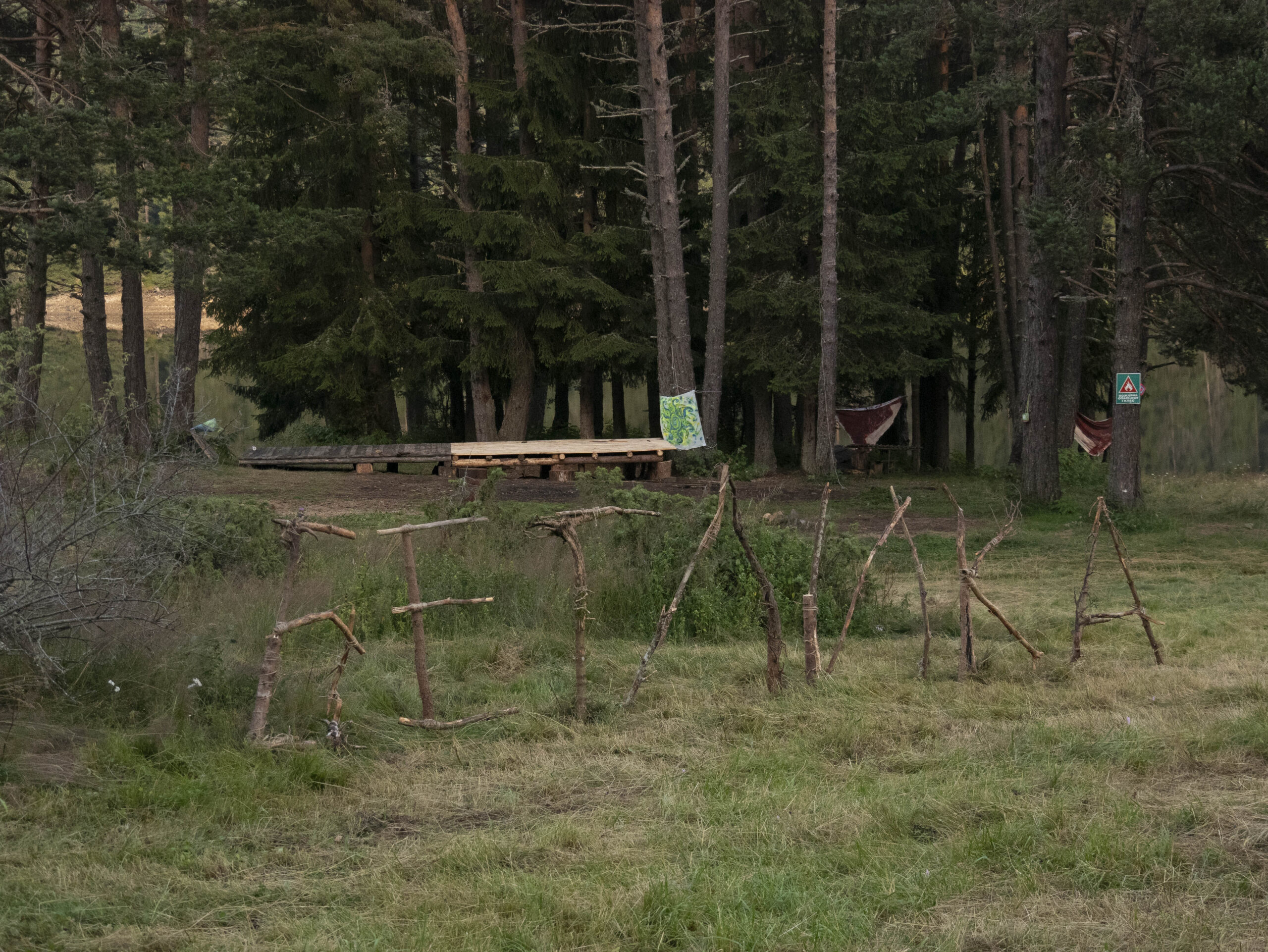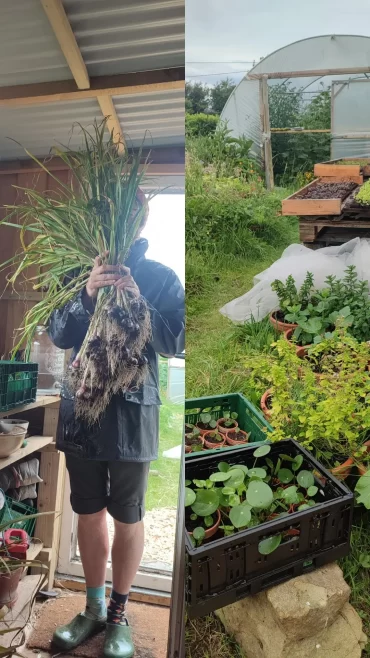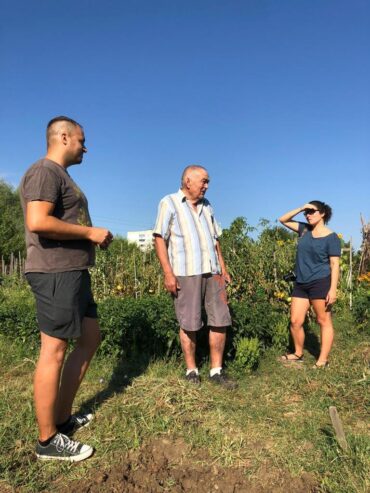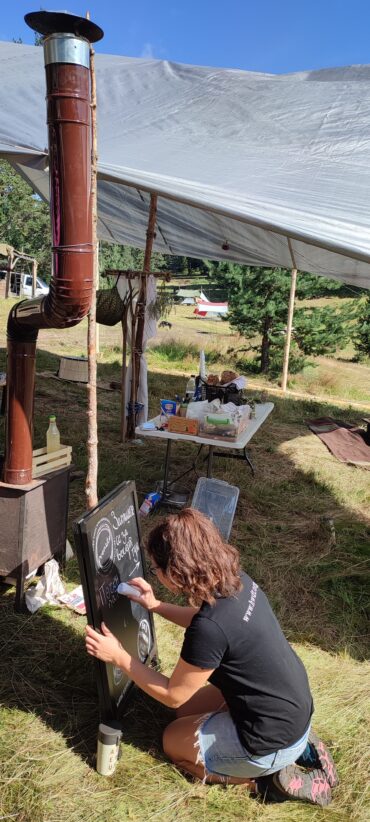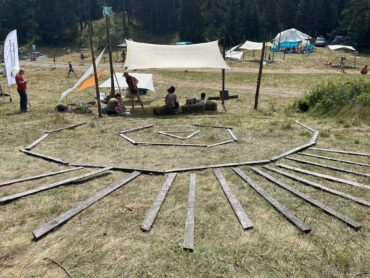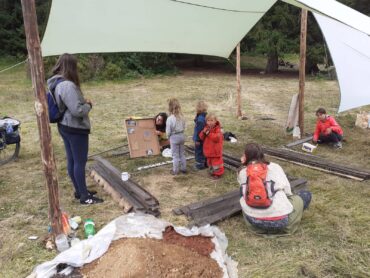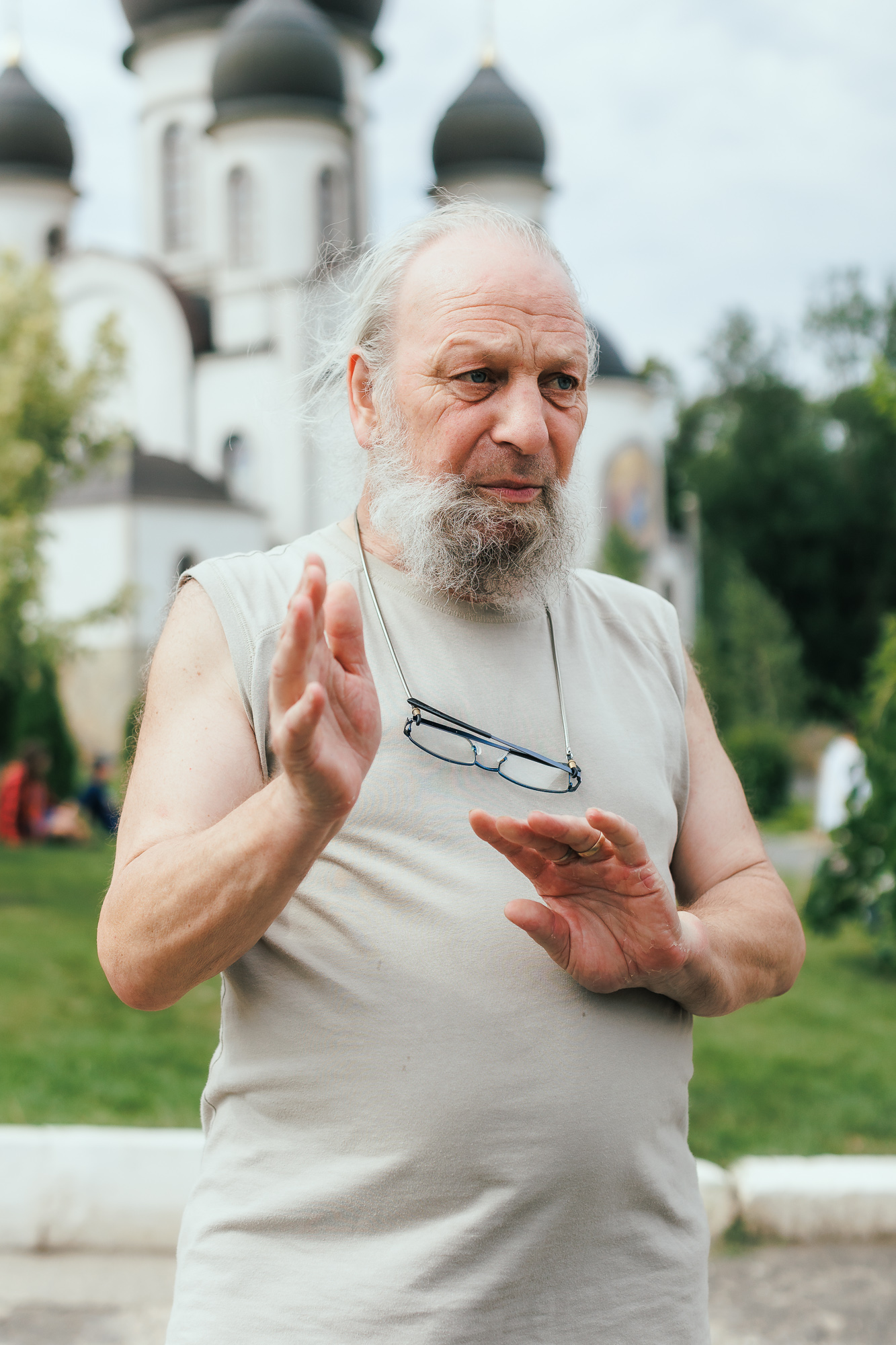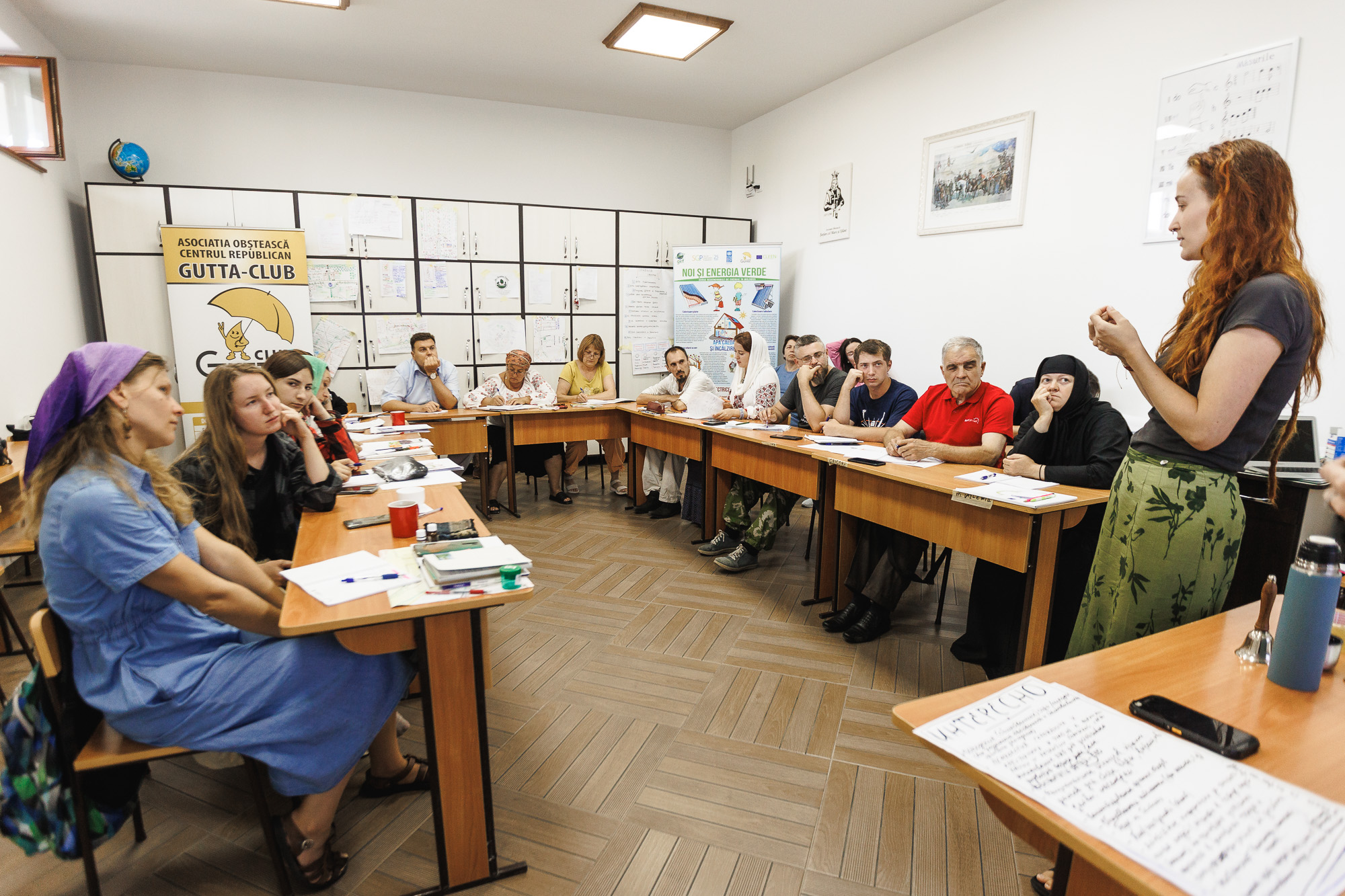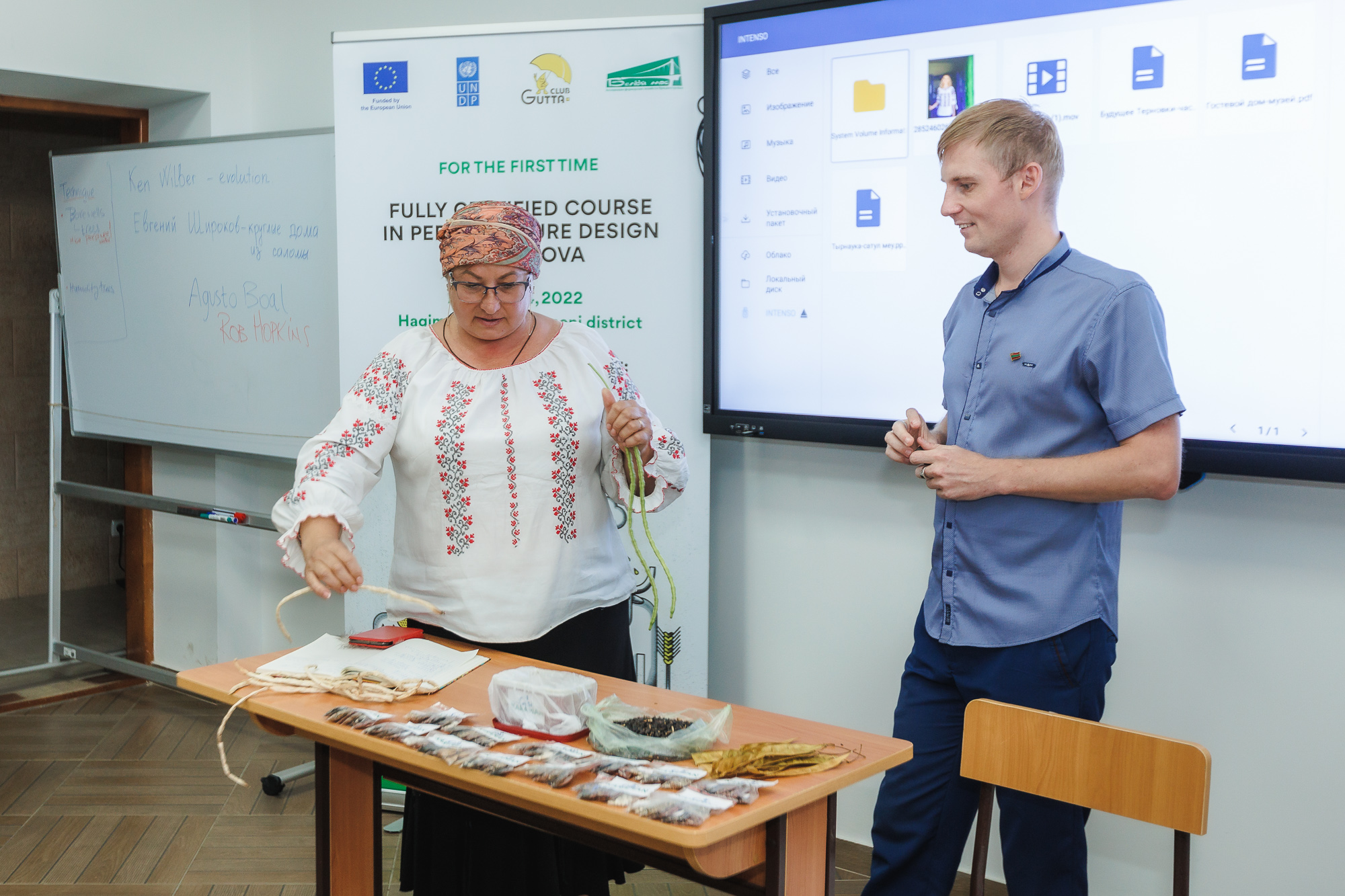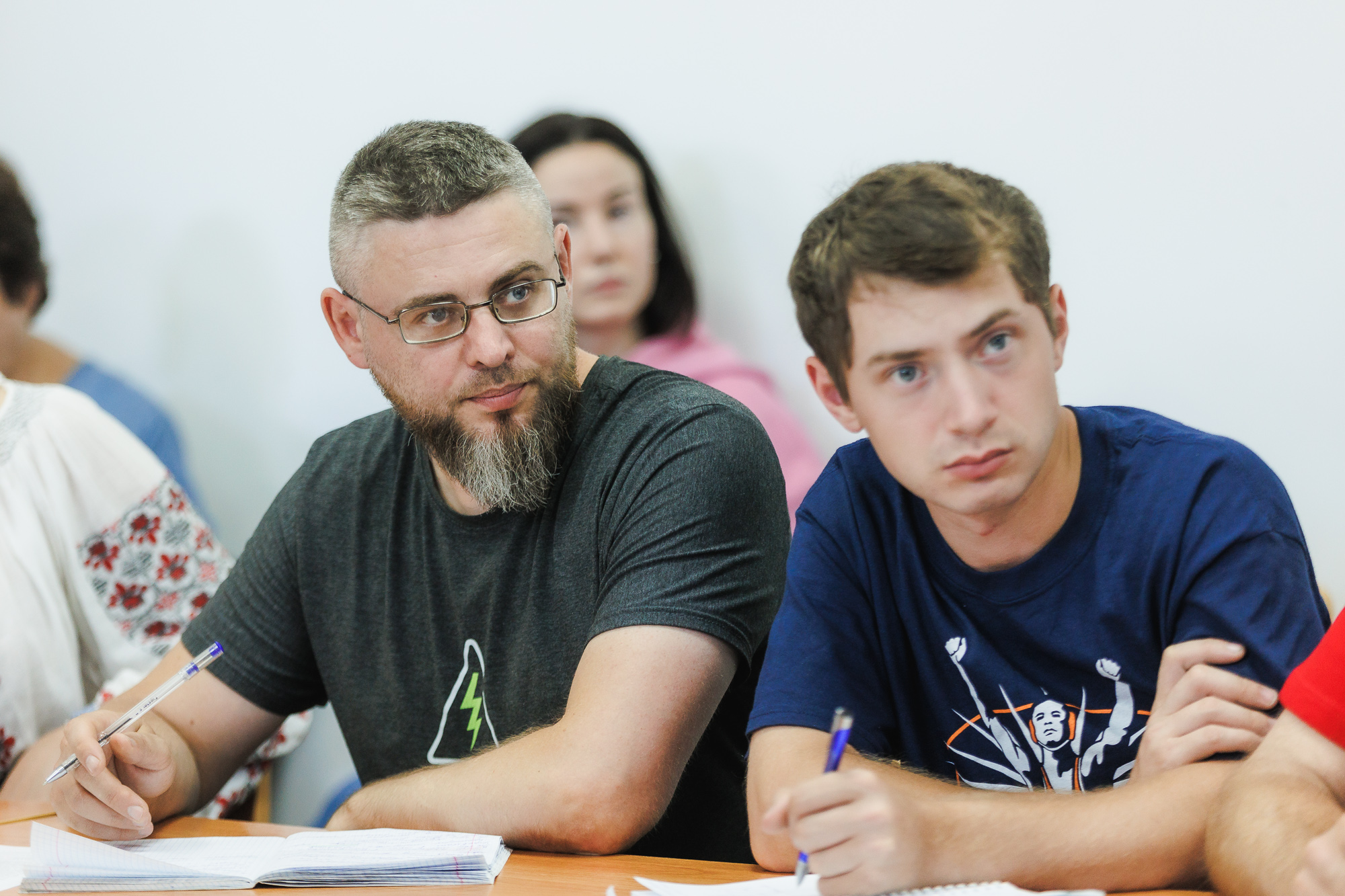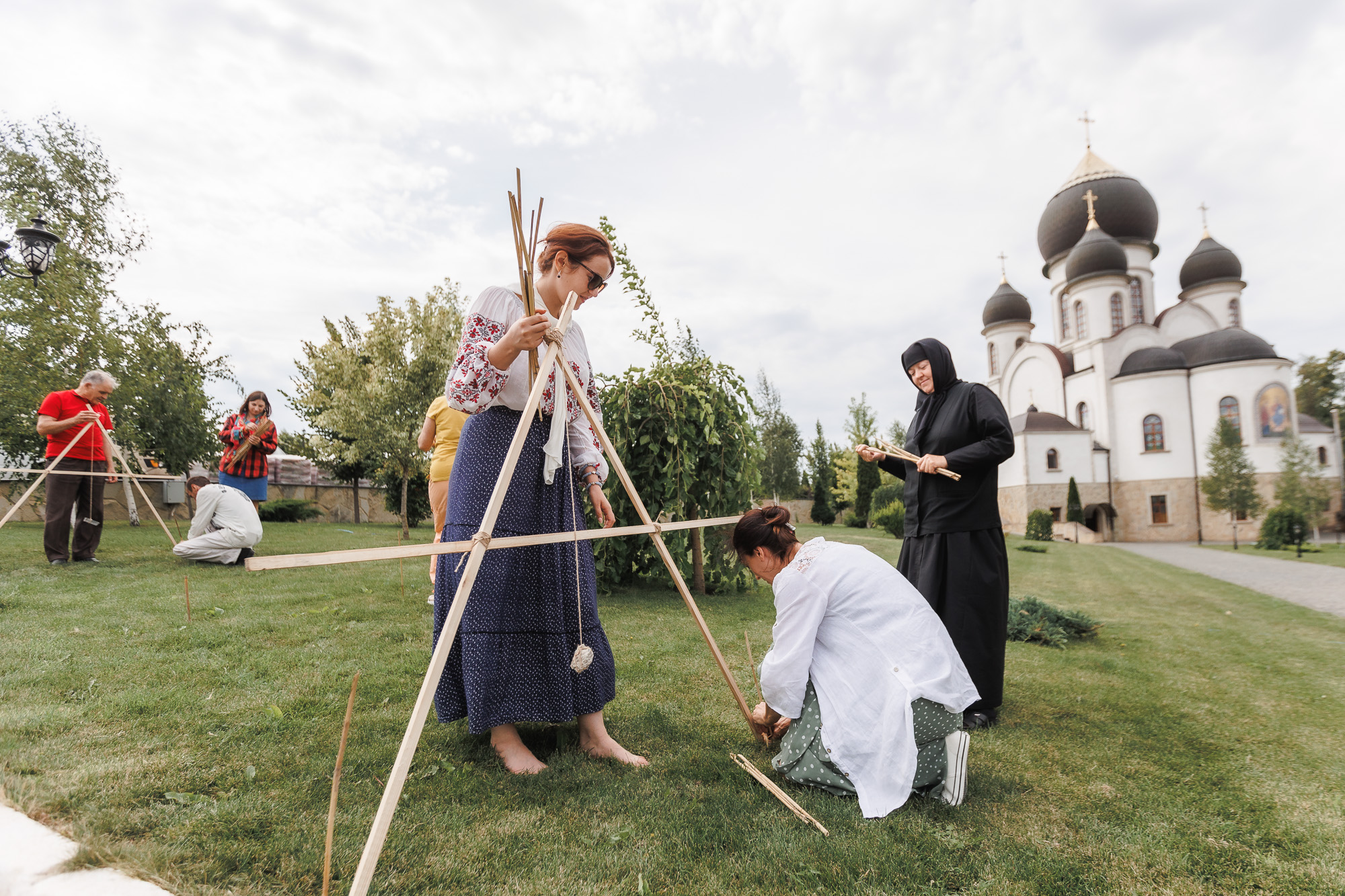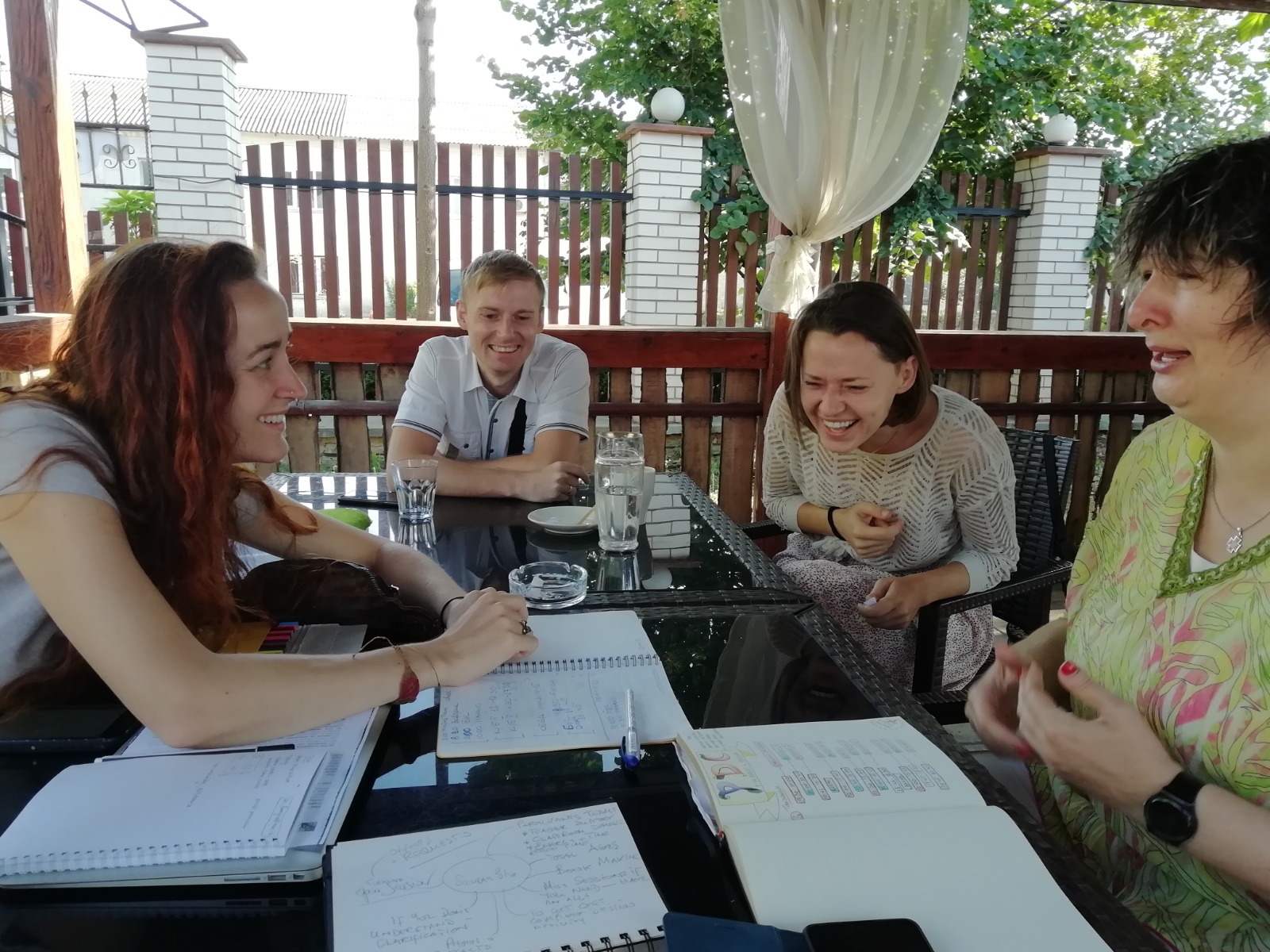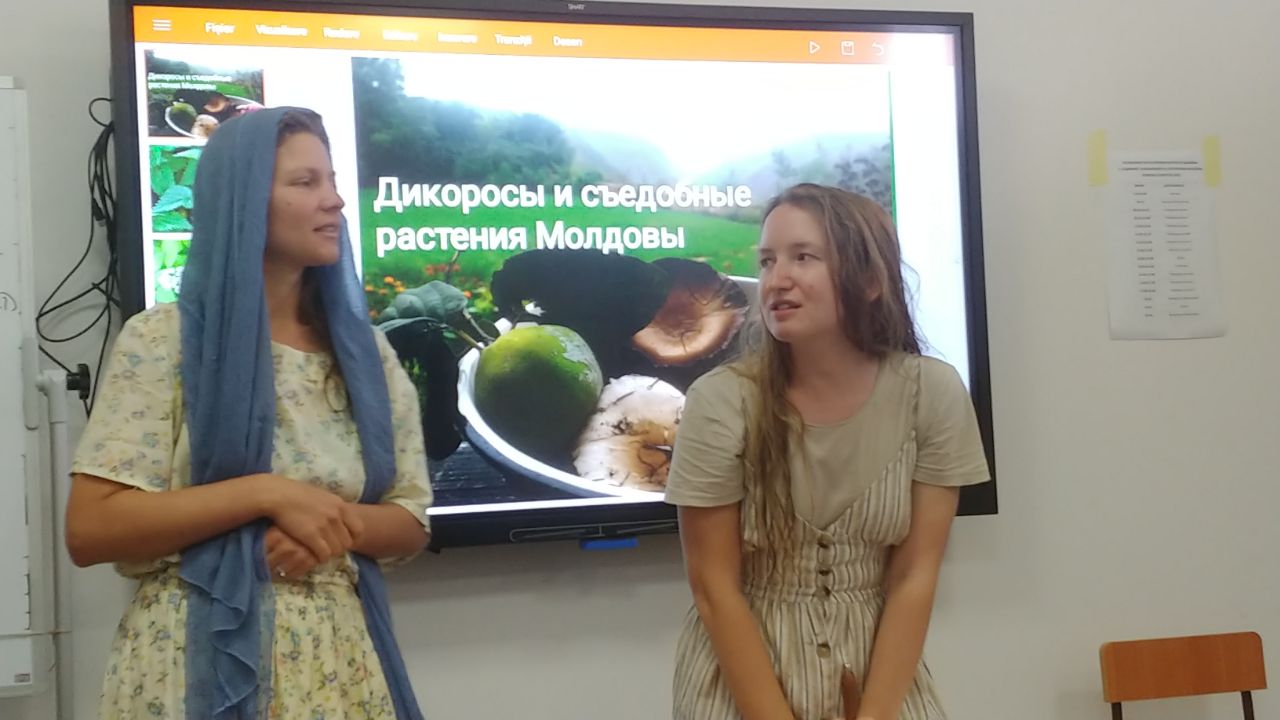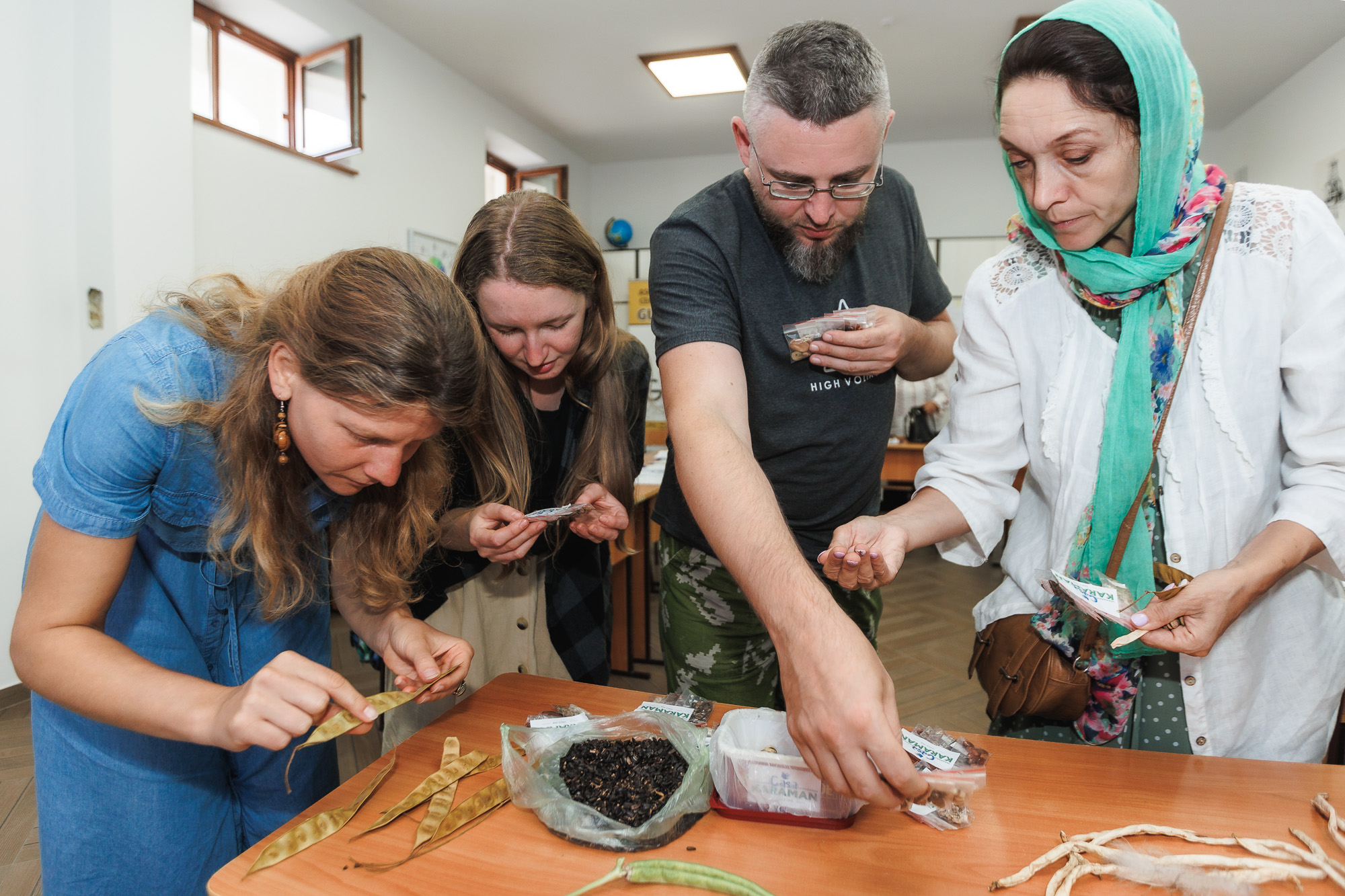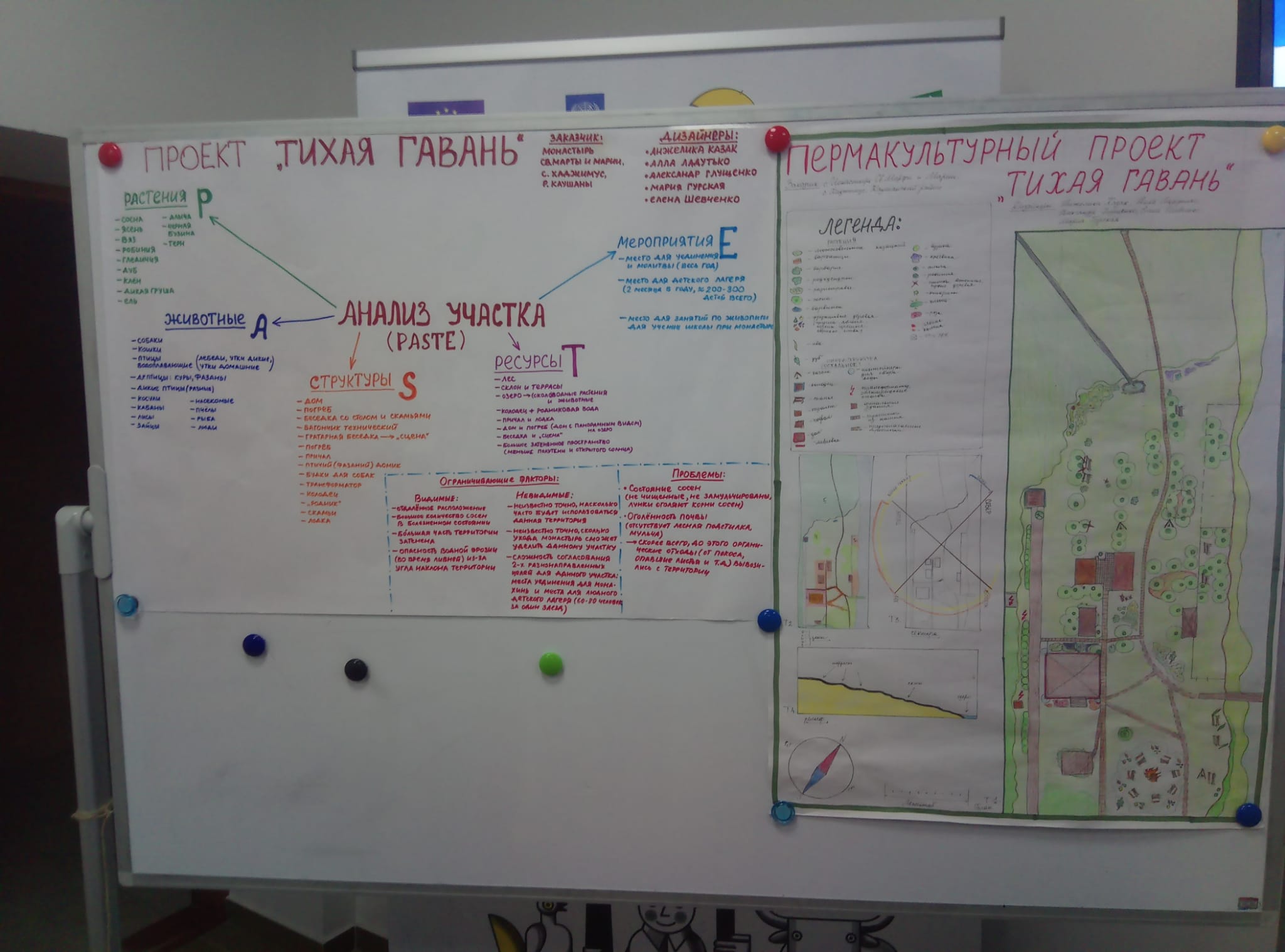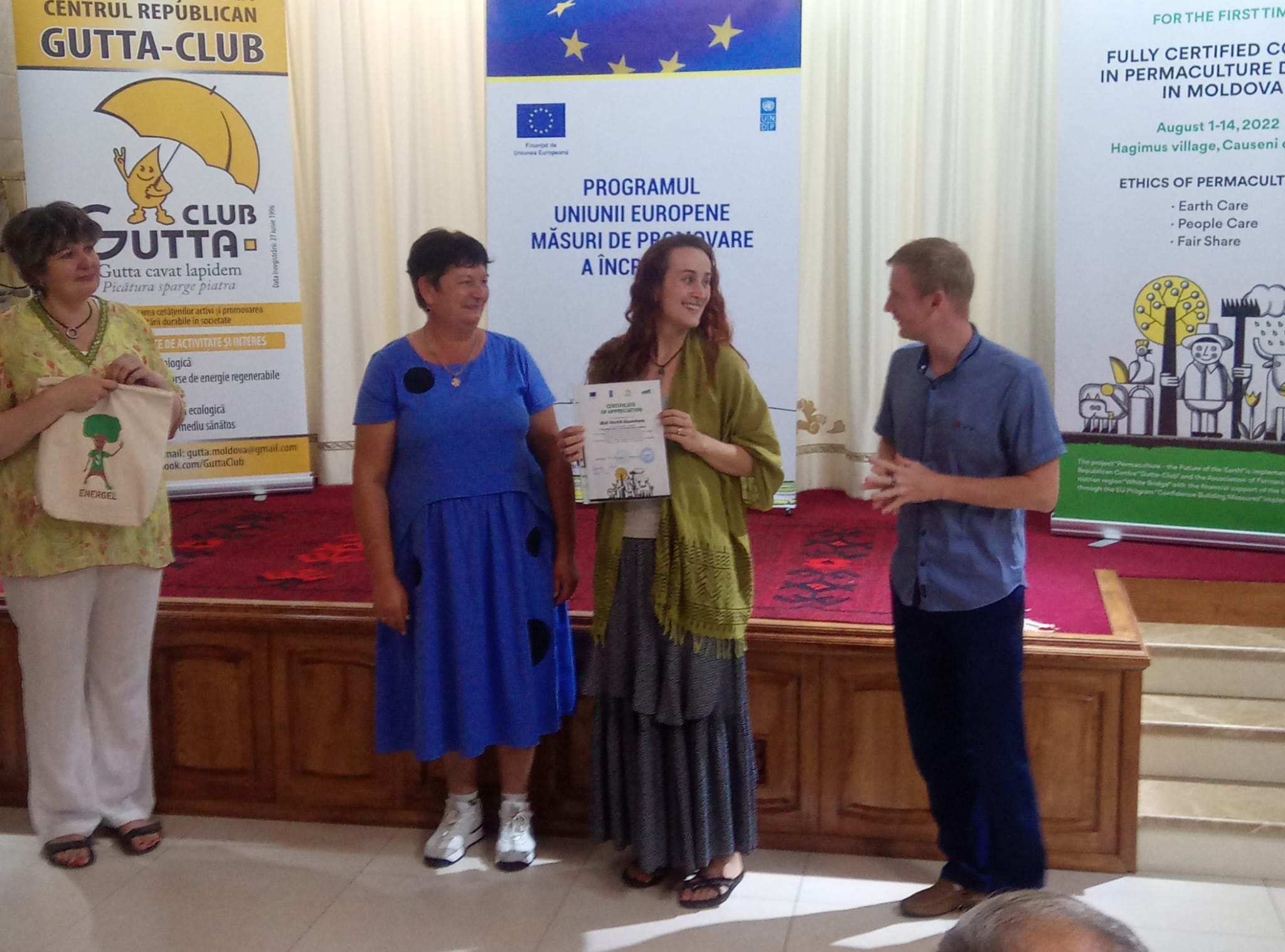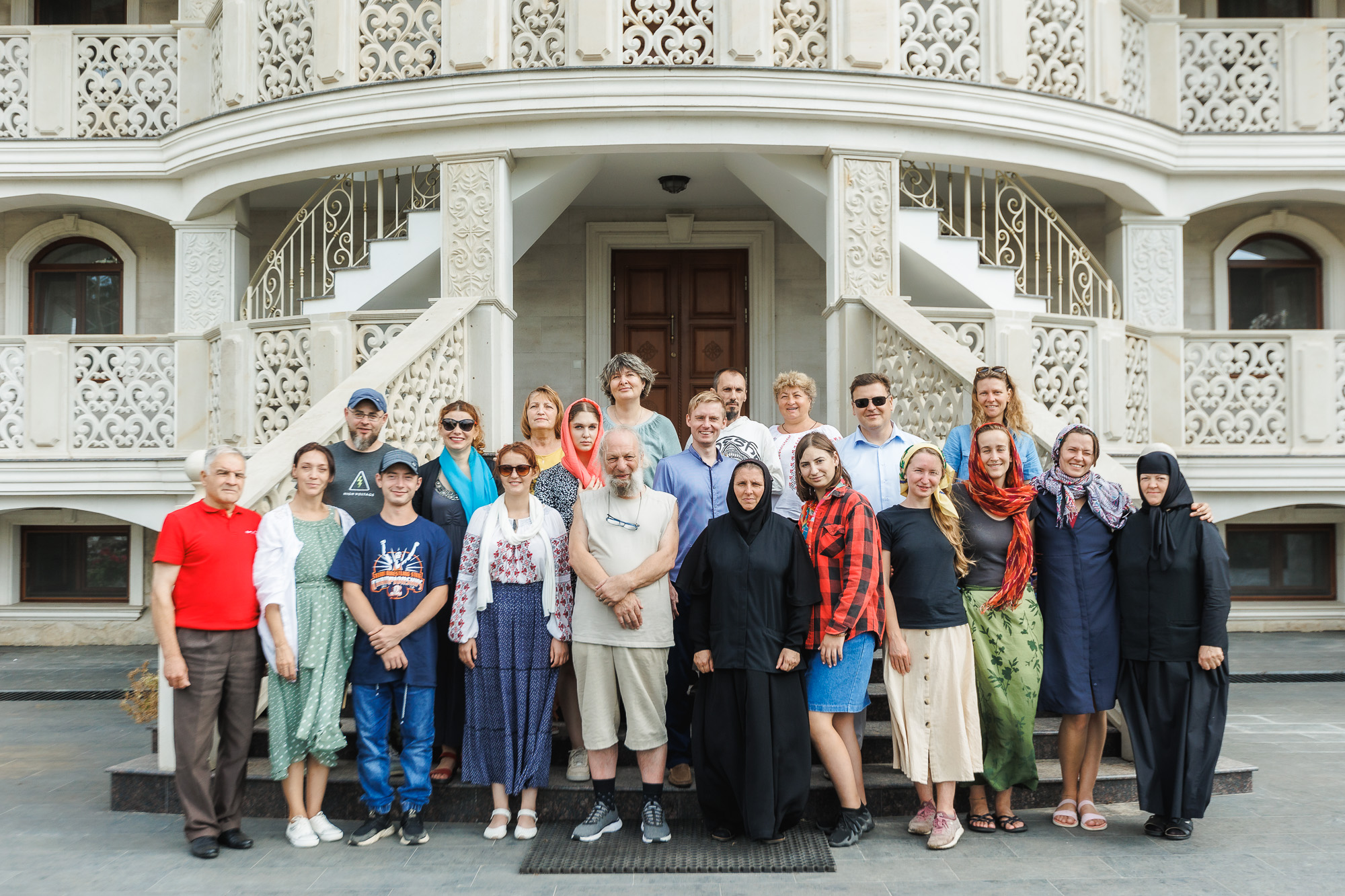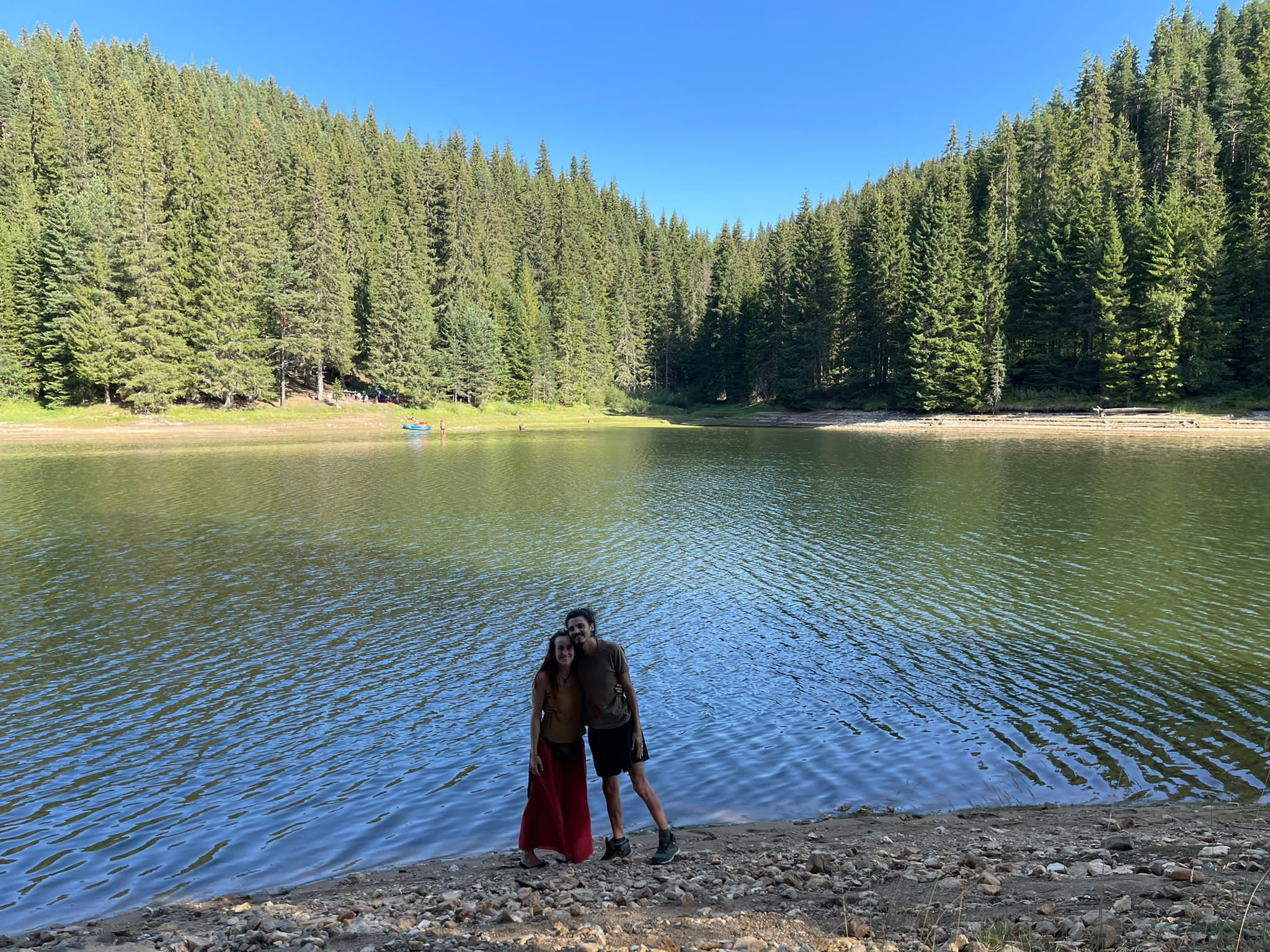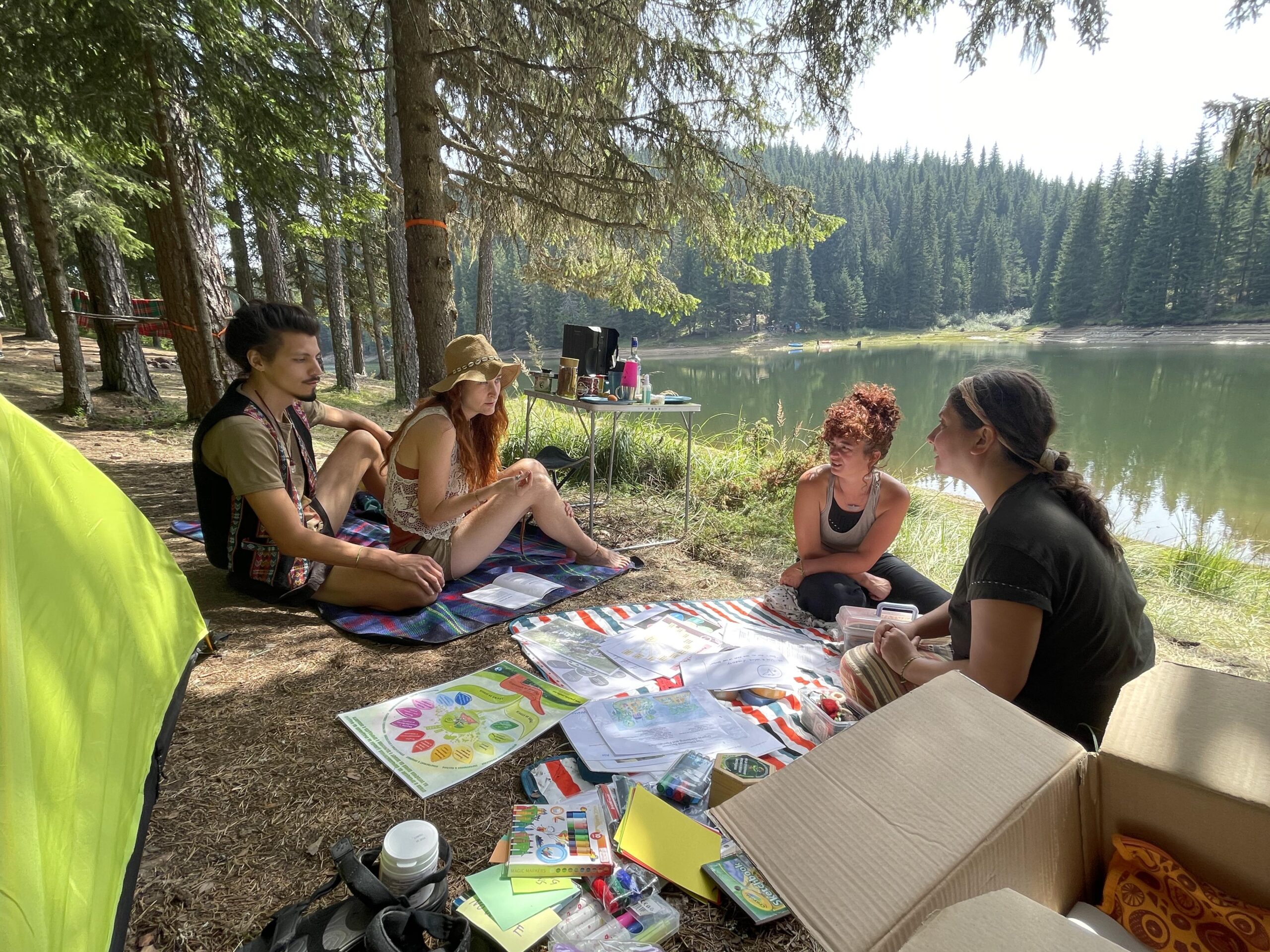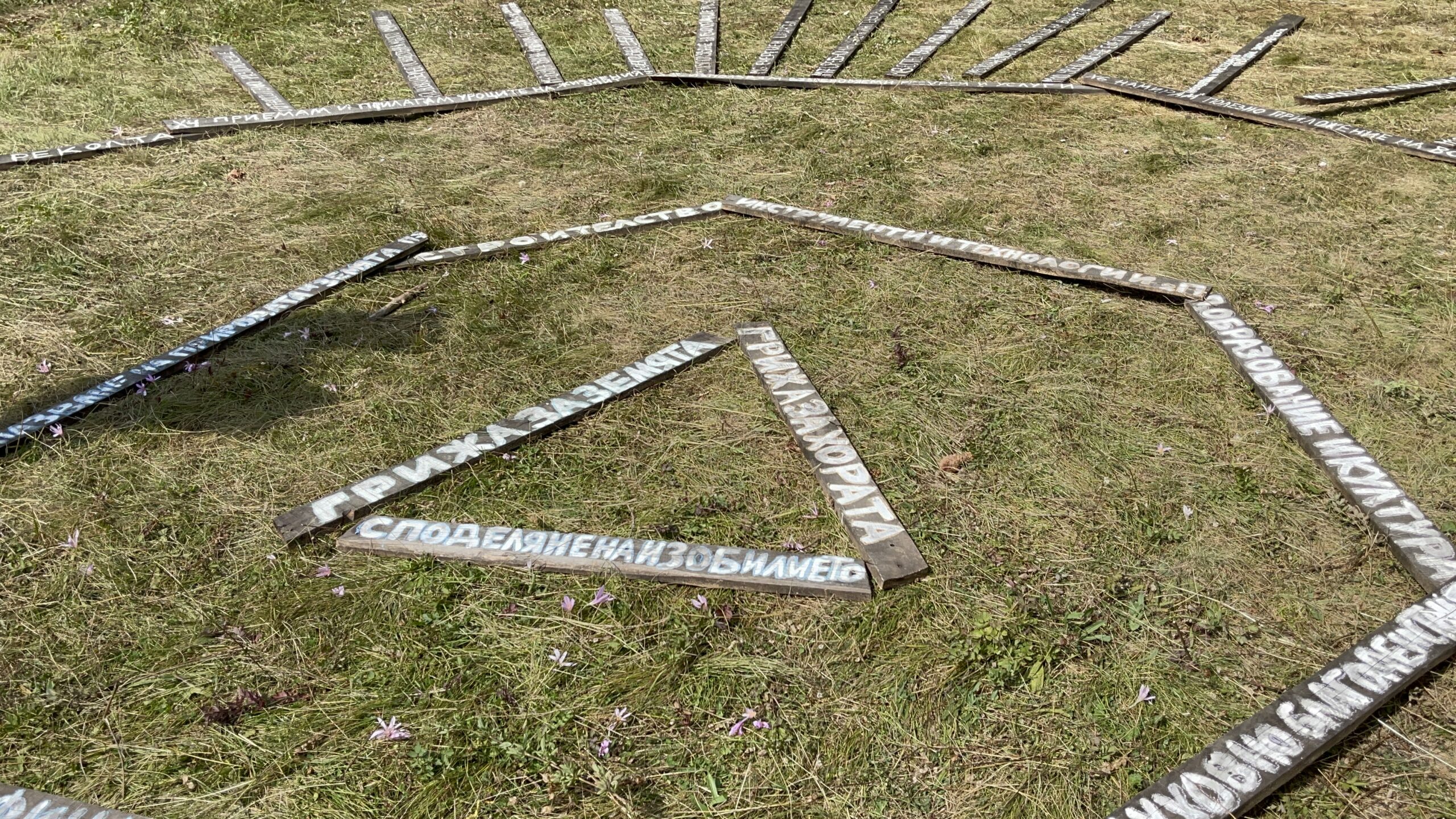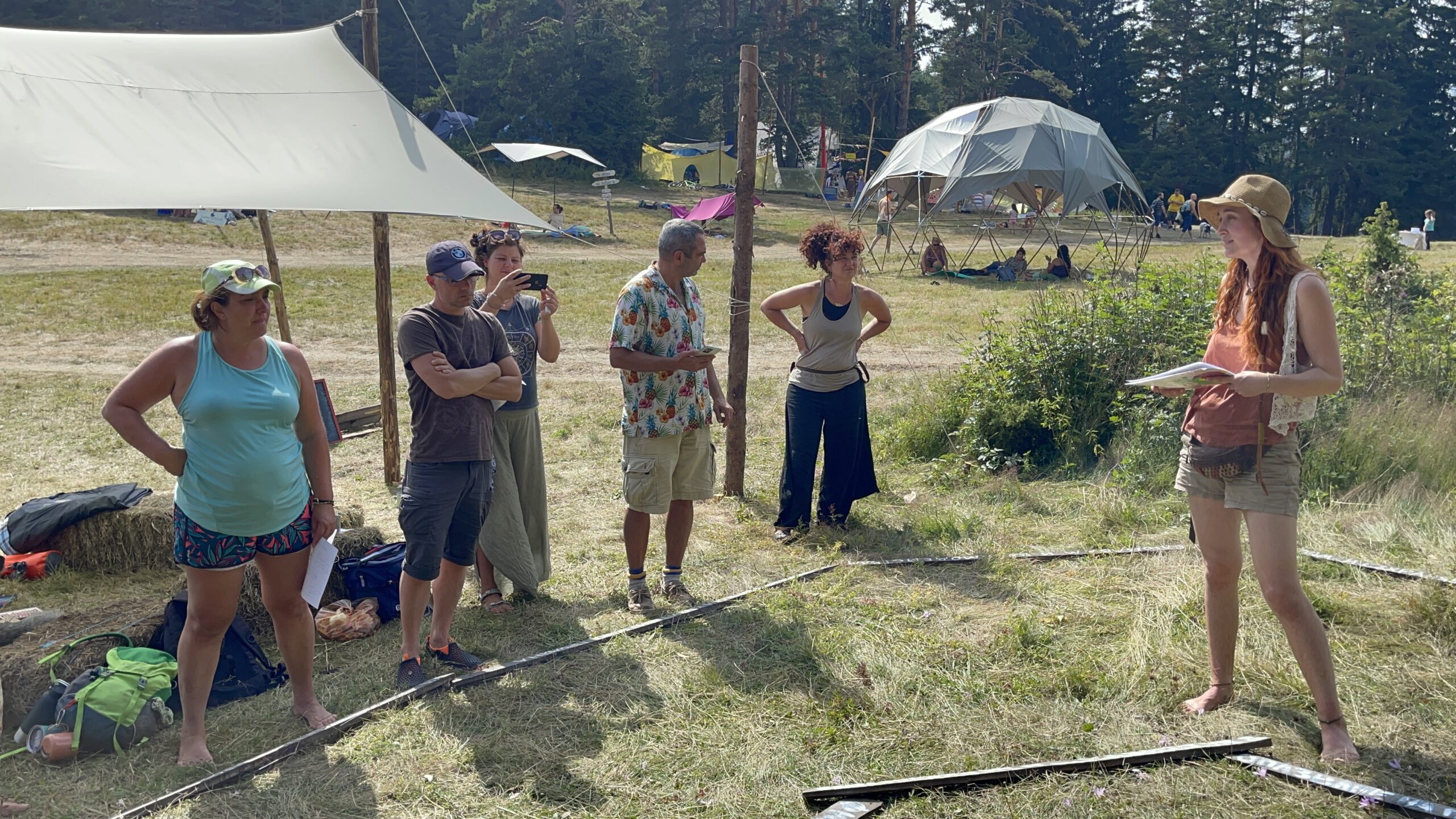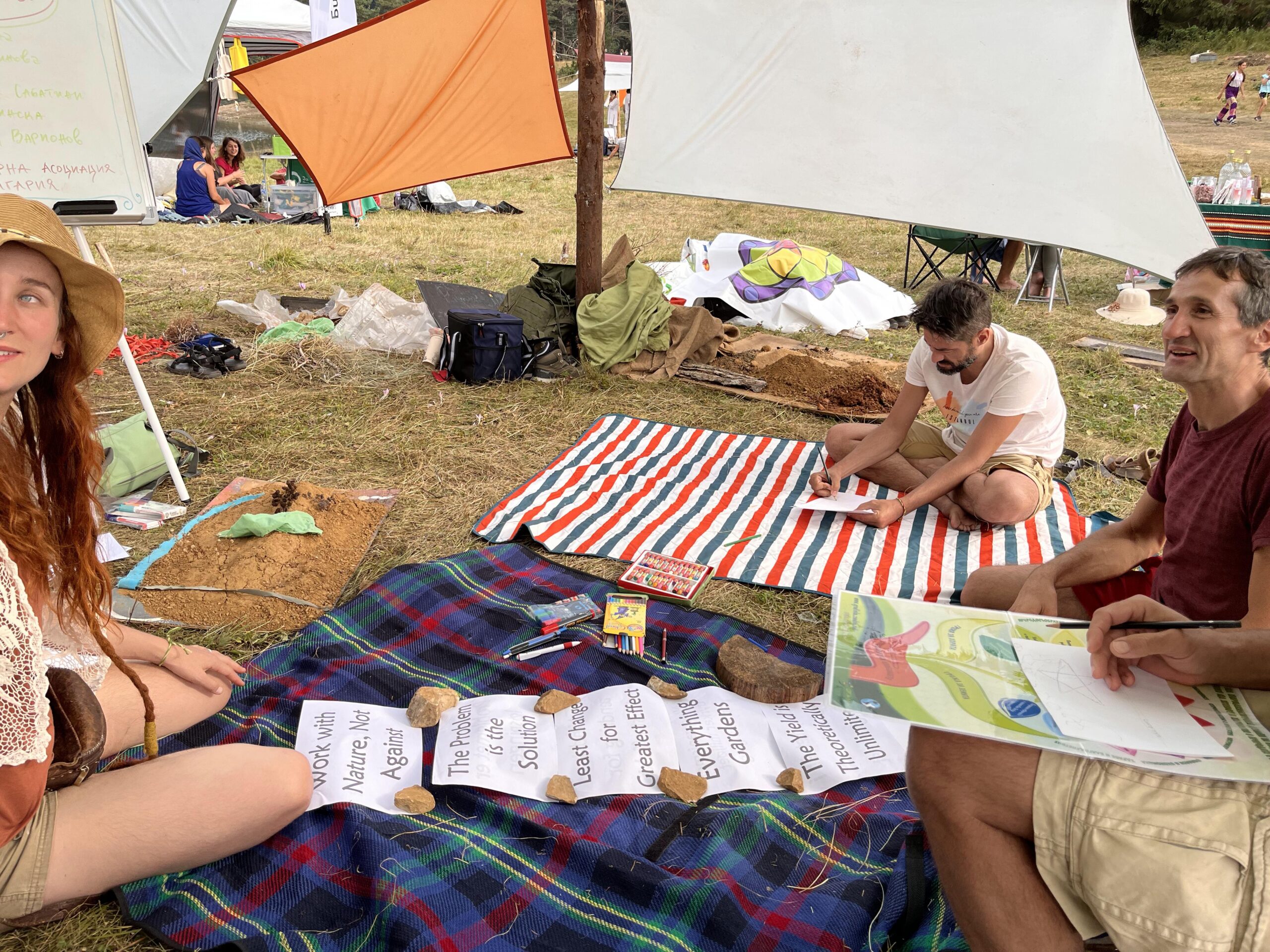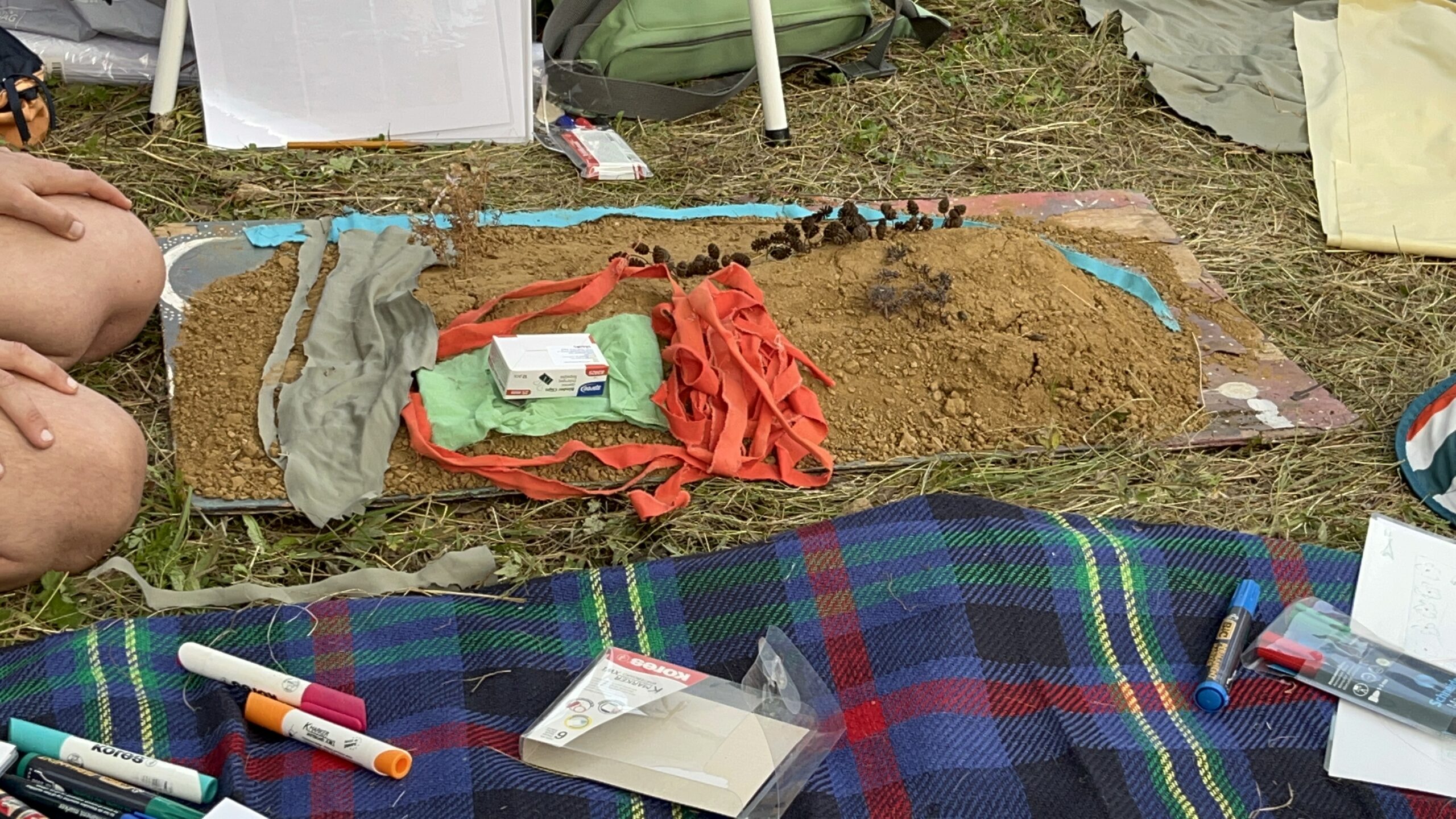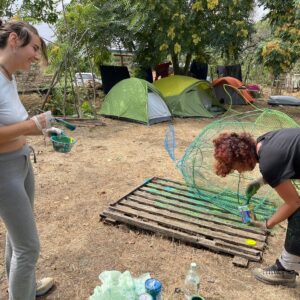Hello, hello!
Say hello to Paula! She joined us in week 20.
Vyara:
Long time no post, but summer proved to be very busy time for me. I was trying to stay on top of writing the blog every Friday, but during the past four weeks I was either on holiday, completely overwhelmed by work, packing for a festival, coming back from a festival… or all of the above ! Long story short, if you have gardener friend, don`t expect them to stick to their promises during summer time 😂
Week 17 I spent on official holiday, unofficial working week in Ireland, where I helped a friend with his organic market garden. The reason I like going to Ireland and spending time there is so I can observe how the different climate affects the vegetable growth and the length of the growing season. For example: the weather on the West coast is quite severe, you can only grow tomatoes in green houses, however brassica plants LOVE to be outside throughout the whole year; did I mention that it rains a lot and there is no such thing as dry season? In comparison, here, in Bulgaria, we grow tomatoes in greenhouses, if we want to protect them from the sun, not to shelter them from the rain. Brassica plants are best to be planted in late summer, otherwise it is too hot and they grow slow. I mentioned this before, but ever since I started observing nature I started to understand and predict how plants will react to certain weather conditions.
Harvesting garlic and repotting houseplants
Another super interesting thing, which happened when I came back from Ireland is that I visited two community gardens in Sofia- the garden of ”Food not bombs” and the community garden in Drujba. I was very happy to finally meet Ivan, who is a driving force behind ”Food not bombs”! This is a self governed initiative for cooking and sharing food and clothes for people in need. You can watch a short documentary about the stories of people visiting the ”Food not bombs” here:
Ivan, Dancho and me in the community garden in Drujba
During week 18, I was mainly occupied by an online mid-term training, which was provided by the National Agency. Even thought the training was online I had the opportunity to get to know some very interesting young people from Bulgaria, who are working in NGOs, doing their own ESC projects around Bulgaria. It was very interesting to learn about what future opportunities there are after my project, and also to participate in the practical challenges our trainers prepared for us.
P.S. Yes, this means I have less than three months left on my project 🙁
Last week (week 19) I spent at Beglika Festival, where I was helping Venets at their stall and the community kitchen they created for the people at the festival. The idea behind the community kitchen was that visitors can come and use the pans, pots, non perishables ect, to cook their food on the stove and donate a small amount for the things provided. Anybody willing to come and donate or share food was also welcomed. The community kitchen was a shelter for people wanting the escape the rainy weather or meet up with their friends. I think this is a great example of solidarity and it should continue year after year, not only in Beglika, but on other festivals as well.
Community kitchen at Beglika Festival
While I was not helping Venets me along with another partner of the Permaculture Association were setting up the space for participants giving lectures related to Nature and organic gardening. For the space we created wooden boards with the permaculture ethics and David Holmgren and Bill Mollison’s permaculture principles.
Permaculture principles arranged in the form of a flower (picture credit to Mihaela Tsarchinska)
We also created a model of one of Venets`s yards to explain the different zones. Almost forgot to mention that I also gave my very first lectures, the topics of which were ‘’History of Permaculture’’. The lecture was more in the form of a discussion, where I was asking them questions and exploring what their experience with permaculture is what they would like to know.
Explaining the concept of Permaculture to German speaking kids
Overall I had great experience at Beglika Festival and I would recommend it to everybody willing to participate, volunteer or come and visit.
Week 20! Back home, in Venets. I promised to write a few small articles about seed savings, and this week I will give you a few tips. I will try not to overwhelm you with too much information!
When people approach me about starting their own garden I always tell them: ”grow what you like to eat and what you want to see!”. My advice with seed saving is the same: collect seeds from your favorite plants and flowers, in this way you will be more invested in observing the plant and saving the seed when the time comes. But did you know that there are annual, biennial and perennial plants? What is the difference? Well, not all plants flower, form seed and die in a single season, some that do are called annuals. Biennials don’t flower until their second growing season, such are the carrots, beets, brussels sprouts. Some long lasting plants, such as fruit trees and asparagus, survive the cold and flower every season are called perennials. That that you know the difference between the tree you will know when to expect the flowers and collect the seeds.
If you are a garden enthusiast maybe you already know about plant species, because you are using crop rotation. But learning plant species is important if you also want to save seeds from your favorite plants. Plant species is a group of plants that are able to reproduce together, most crops are different species from one another, but plants from the same species can cross pollinate and the seed created will not contain the characteristics of the original (mother) plant. The kind people from Seedsaving.org created a brilliant chart with detailed information for people who want to start seedsaving. Have a look: https://www.seedsavers.org/site/pdf/Seed%20Saving%20Guide_2017.pdf
Oook, enough from me for this week! Hope this post wasn`t too long, and stay tuned for more information on seed saving next week!
Mali
Hi all! This is gonna be my longest post ever… so make yourself a nice cup of tea, and find a quiet moment to read this story about the past 3-4 weeks 🙂
It has been a long while that I left my computer untouched to take a moment to write and reflect, as the past one and a half month I have been all over the place. In our third week at Venets (week 16) I got covid and had no energy to write, as the little energy I had, was mostly going to preparing myself for a 3-week permaculture teaching adventure in Moldova (meaning a three-week’s pause of my ESC project), to a country I had never visited before 🙂
I regard myself as really lucky to have had the opportunity to join one of Britain’s pioneering permaculture teachers, George Sobol, as his teaching apprentice in the first certified permaculture design course organised by the Moldovan NGO Gutta Club and funded by the UNDP. George’s teaching endeavours started in the beginning of the ‘90s, when permaculture was only beginning to get recognised. Besides being one of the main developers of the British permaculture curriculum, George is also one of the founders of the extensive online plant database ‘Plants for a Future’ (pfaf.org really, you should check this one out!). So, my excitement couldn’t be any bigger to teach besides him for fourteen days.
George Sobol (Photo credits: UNDP Moldova)
I do have experience in standing in front of groups as a facilitator, moderator and organiser from the time I was working for a small educational foundation in The Netherlands and when I was living in an ecovillage, hosting various educational events, workshops and trainings. However, teaching had so far been totally unexplored by me. The Teaching Permaculture Training that I had joined in Croatia about two months ago was a nice little taster, but rather meant to prepare us for teaching intros to permaculture, not exactly an immersive 72-hour Permaculture Design Course… Even less so, was I prepared for the challenge to teach in English with two translators next to me juggling my words into Russian for the group to understand. The reason for the course to be in Russian served a good cause though. Half of the group came from Moldova and the other half from Transnistria, an unrecognised breakaway state with a majority of Russian(-speaking) inhabitants that is internationally recognised as part of Moldova, but internally still giving rise to many tensions since the nineties of the previous century. One of the underlying reasons for this mix of participants – besides teaching permaculture and motivating the group to start developing a permaculture association – was peacebuilding and reconciliation between these two parts of the country. I truly believe learning to see the world with permaculture glasses on is a perfect starting point for this! Another great element of this course was that you could only participate if you had a piece of land, meaning that after the PDC everyone was going to motivated to create a design for their lands.
Me teaching (Photo credits: UNDP Moldova)
I find it hard to know where to start and end in sharing about what I went through and learned there – being such a rich and out-of-my-comfort-zone experience. As we would be hosted by the nuns of the orthodox convent Marta & Maria for our classes, I knew this course was already going to be very special. Checking their website (https://martamaria.md/en) before arrival, photos of enchanting churches and lush green parks made my fantasy mind go wild. Crucial items on the packing list were a head scarf and long skirts for the women to wear when roaming the convent’s land. I really wasn’t sure what to expect, with a vague image in mind of a nun being someone very strict, conservative and reserved towards something as alien and odd as permaculture. Then me, an atheist teacher-to-be with two nose pearcings, and a meter long dreadlock… how to bridge those two worlds? Luckily, from day 1, I could wave away this contrast and feel being welcomed into a warm bath of tranquility, goodness and generosity. Both me and George were very surprised to find the three school rooms that we could use for our classes to be equipped with the latest technologies. It was a fun struggle to be working with a digital whiteboard, where we could draw, save our scribblings as pdf and a click later show some video on YouTube. Despite the age difference between George and I, even I felt like coming from another century!
A student sharing about her project preserving rural traditions in the form of a local museum (photo credits: UNDP Moldova)
Just to give you and idea of the routine for a teacher or apprentice (in this case pretty much the same) in an intensive PDC course; at 8:00 we met during breakfast with our two translators to quickly run through the day and to share any practicalities that still needed to be solved. After breakfast, a driver took the whole group on a 20 minute ride to the convent. Putting my headscarf on, we walked across the convent, often welcomed by beautiful women’s voices reverberating from the church’s outdoor speakers, when the choir was rehearsing or singing at service. Somewhere halfway the training, when I was already quite tired, a melancholic voice from the speaker made my hears go up and some tears roll down my cheeks. The only time I arrived a bit later in class…
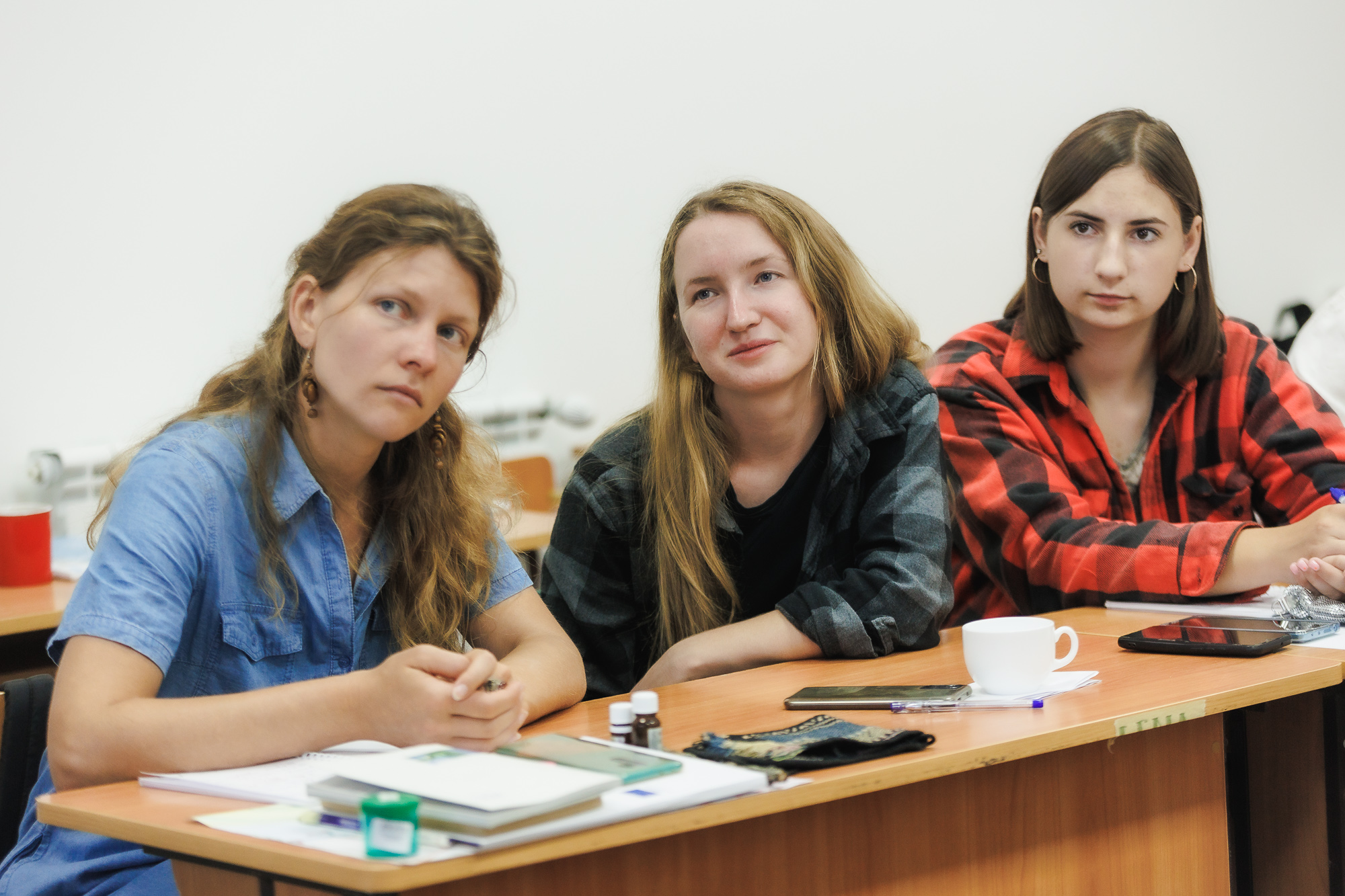
Concentrated faces (photo credits: UNDP Moldova)
After a half-hour morning check-in circle with some name game and fun energizer, the days would follow more or less this structure; starting with four theoretical sessions of each 45 minutes in the morning, which George and would try to equally separate. Closing the morning sessions, I soon discovered the healing effects of taking a dive into dazzling cold holy (?) water in a religious bathing place together with some of the women in the group, before heading for lunch. Every day a different delicious dish appeared on our table, with fresh and organic veggies, fruits, milk, sour cream, yoghurt, bread, meat, etc. all produced and harvested by the nuns from their own farm, including the most delicious wine I have ever tasted! Yes, right, alcohol at lunch… mmm maybe I shouldn’t have mentioned that 😉 After lunch, as a teacher you should know people generally have their biggest energy drop since your body simply needs all attention to digest all that delicious food. So you would best schedule literally easier to digest topics into this part of the day, which in this case were two practical sessions of 45 minutes. The final two sessions of the day were also a little less heavy usually and a couple of times George took out his powerpoint slideshow with infinite photos of his own travels to projects, bringing the group a bit closer to real-life permaculture examples on the last hour of the day.
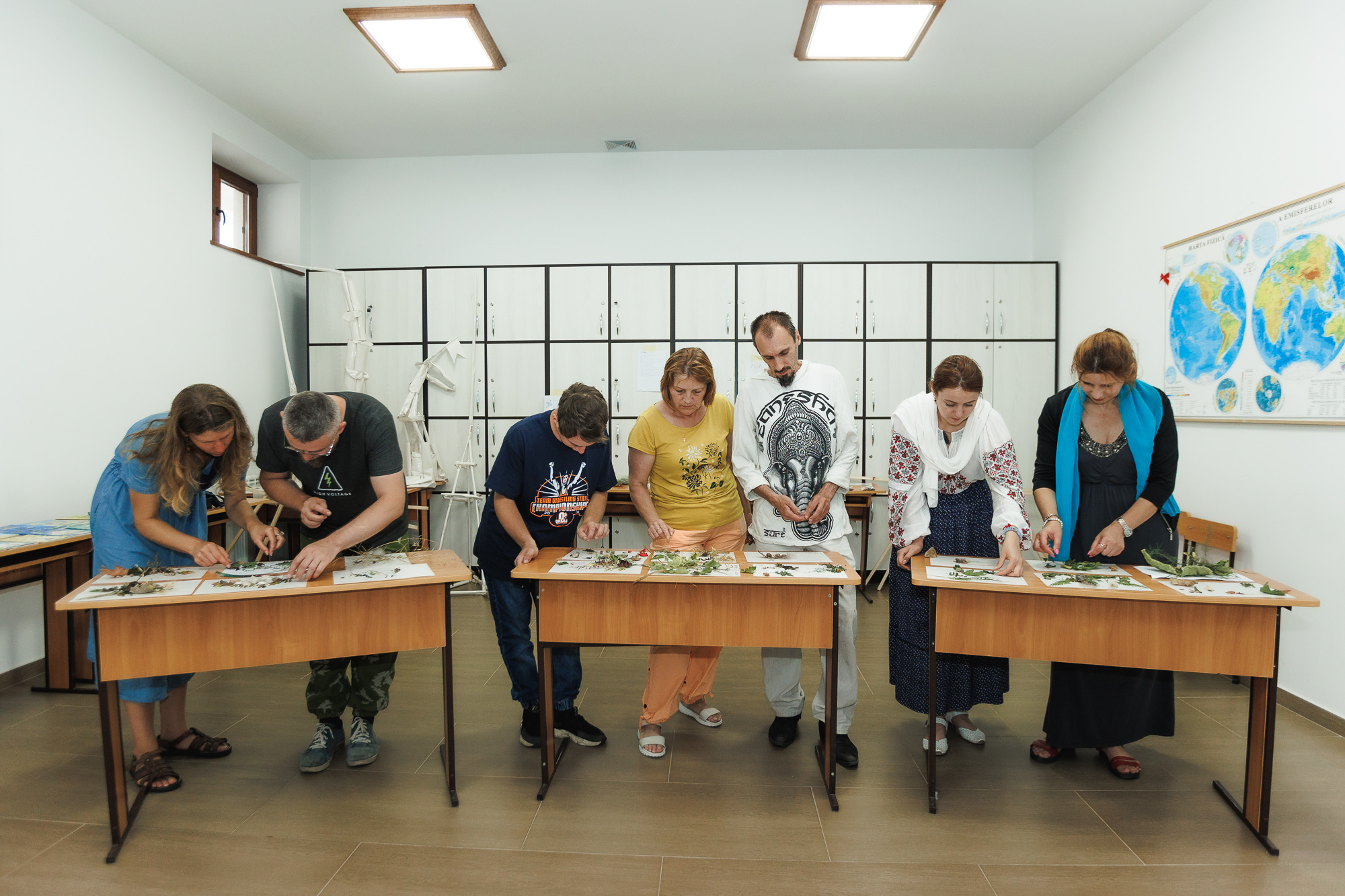
Practical sessions, making a natural collage and learning to use the A-frame to measure contour lines (photo credits: UNDP Moldova)
Closing the day, we would jump back into the bus taking us back to the hotel, where other – less calming – music was welcoming us. Many families and groups of friends would celebrate their birthday and wedding parties over the course of those 14 days in the night time, with load music overruling our evening conversations. Anyways, the huge contrast of our teaching and ‘resting’ locations was quite interesting and probably something we also really needed. After dinner, it wasn’t finished for me yet, resting was something I could do after the PDC… together with the translators we would run through the next day’s schedule and after they left to join the other for some beers and fun, me and George stayed to divide the sessions. Almost every night till very late George and I were discussing the topics, comparing our different perspectives on how to teach the session. So as I only got to know what topic I was going to teach about the evening before, this sometimes meant, I started making powerpoint presentations or designing an interactive session until after midnight or even during George’s classes the next day.
It wasn’t always hard and serious work in the evening 😉 (photo credits: George Sobol)
Reflecting back on this, this is probably one of the things I would definitely plan differently next time; to separate sessions well in advance, so every teacher has left some resting time and most importantly perhaps – time to connect with the group! As I strongly believe it is just as important to be present as ‘one of them’ and to try and join some informal connection moments. Also really just to get to know the individual histories and realities of each and every one in the group that could also help me plan and adapt my sessions better. Luckily a few younger women did speak English and also discovered many similar interests and life’s perspectives. I would gladly visit them (and others in the group) again to see how things are going along with their – hopefully permaculture-inspired – projects.
Maria and Elena sharing about their passion for wild plant harvesting and the importance of making your own native plant and tree nursery
I really needed this preparation time though, because it’s one thing to understand a topic, but a totally different thing to explain it to others in a comprehensible and participatory way, especially with such a diverse group of people. Somehow though, I forgot about becoming more and more tired every day and really felt like being lifted up in a creative and proactive flow, that helped me to think and design my sessions in such a way that it might fit well the needs and dynamics of the group. The next day would prove if I had made a good decision, because dreaming and doing are two opposite things!
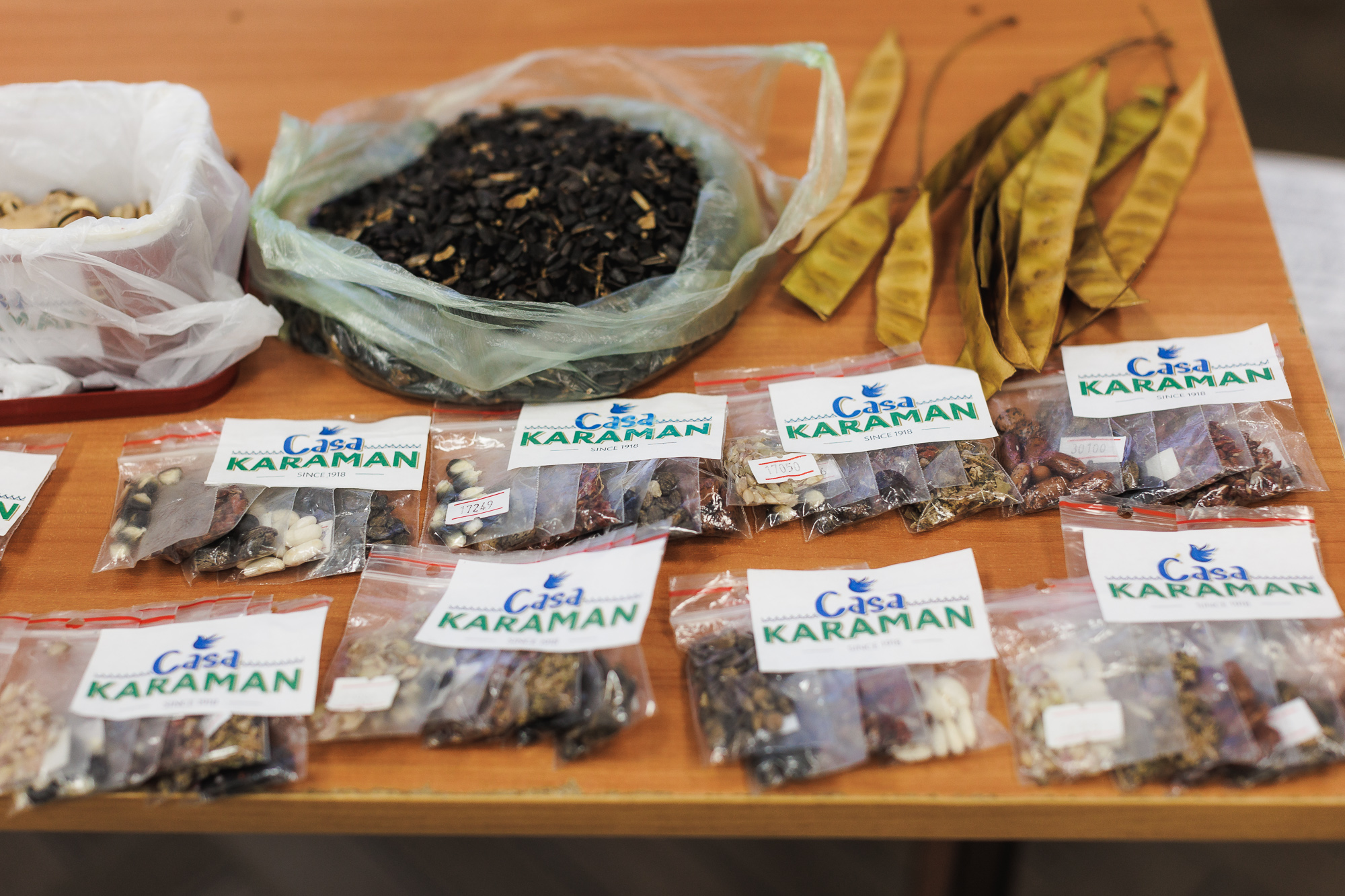
Seeds exchange with seeds that participants brought from their lands (photo credits: UNDP Moldova)
A session that surprised me most of how it turned out, as I felt a bit sceptical at first to share it with this group, was the Council of All Beings (normally not part of a standard PDC). One of many impactful exercises from the Work that Reconnects developed by Joanna Macy, where the participants – including the facilitator – make a mask and step into the body and spirit of non-human beings and entities (think of an ant, a flower, the wind, a mountain, a bird or the sea…) and all gathering into a council where struggles, worries and frustrations from their families and relatives they represent can be shared. The next, confronting stage is that some can take off their masks and transform back into humans that can sit in the center just to listen deeply, in silence. Oftentimes, this is a tough cookie for the ‘humans’ to hear all these non-human voices speak and share hard truths, intuitive wisdom and advice for the future, that you would otherwise never hear, or at least, try to hear… I was touched to see some people being touched by this exercise and hearing their insightful reflections at the end of the session.
The course ended like any PDC with the students working in groups on their design project. Two plots of land were selected on the terrain of the convent where they could dive into their own creativity, while staying connected to the ‘client’s wishes’ (we held an interview with the two nuns who participated in the course). It was a magical moment for me to sit back and see how the knowledge they had gathered and integrated from George’s and my classes showed up in their colourful and creative designs. I am feeling super proud of my students and their final presentations and really hope they will keep on wearing their permaculture glasses in their future (agri)cultural endeavors!
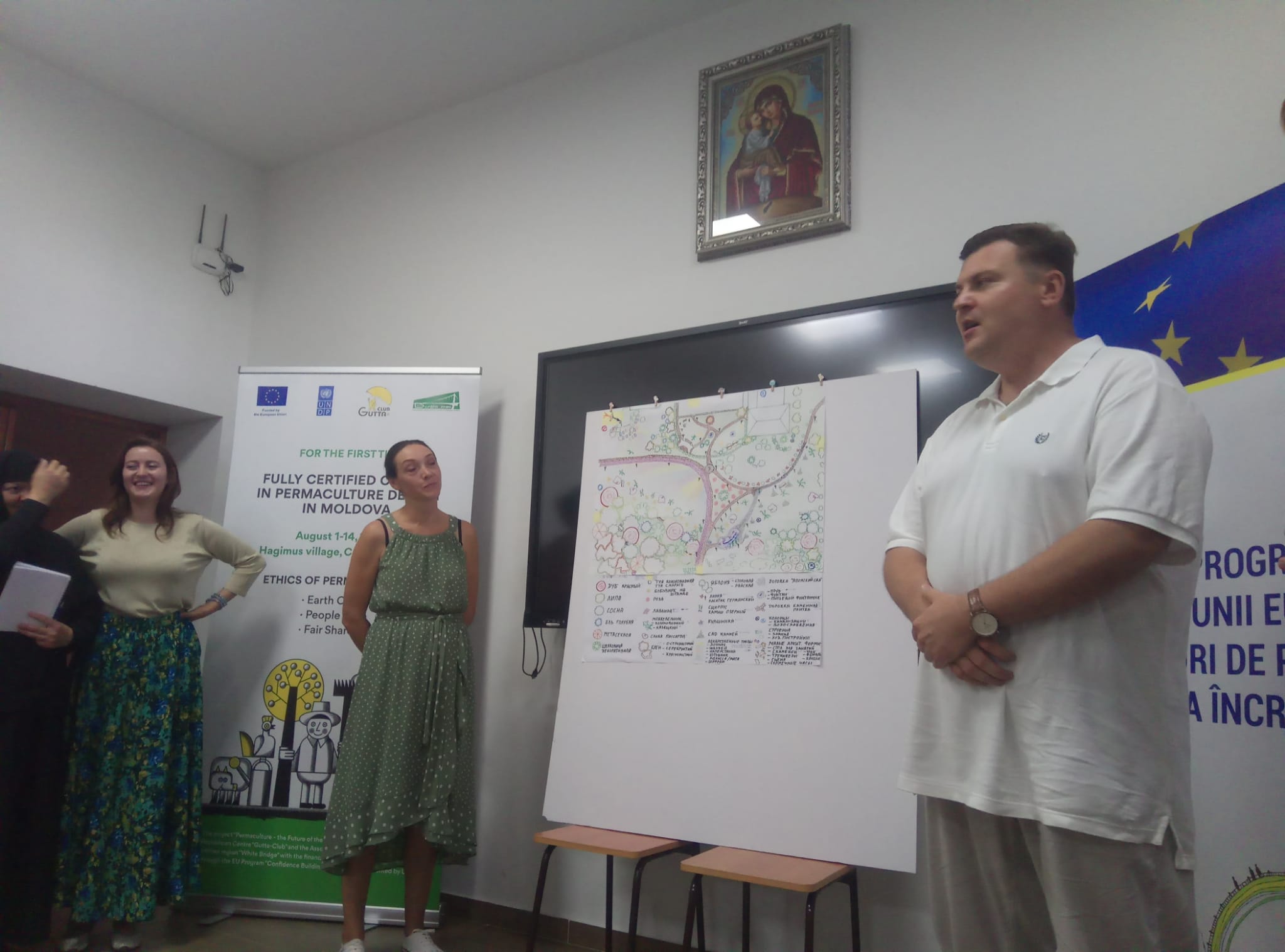
One of the groups presenting and another group’s amazingly elaborated design project (photos: Mali)
Receiving my certificate of participation and a big thanks from the organizers (Photo credits: Iuri)
All in all, these 72+ hours of teaching and learning what it is like standing in front of a class was the best opportunity I could receive on my path in life right now. Alongside PC pioneer George, who made me feel more confident with his contagious passion for teaching and spreading the word about the power that lies in thinking, designing and acting in a permacultural way!
Final group photo (Photo credits: UNDP Moldova)
——————————–~——————————-
After two days of resting from Moldova (now in week 20) in Venets, Renzo and I traveled our way down south to the Rodopi mountains, where we would visit Beglika Festival to join the last two days over the weekend when most visitors are usually expected.
Our camping spot beautifully located next to Beglika lake (photo: Green School Village – GSV)
The others of the Venets team were already there, working hard in the community kitchen. Our role in these days was to facilitate two “intro to permaculture” sessions. With the teaching in Moldova still fresh in my system, I felt more confident to improvise a bit here, depending on who would join these two sessions of each 1,5 hour.
Preparing with Elen (permaculture bee project Gradina Na Pchelite) and Mihaela and all her wonderful teaching materials (photo: GSV)
At the festival site in our workshop space, there were already quite some nice materials prepared by Vyara and others from Green School Village, so we made great use of these.
The Ethics in the middle, the attitudinal principles around it, and in the outer circle and sun rays both Holmgren’s and Mollison’s design principles (photo: GSV)
In our first session we had around 8 people joining in the end. After talking about the history and ethics of permaculture, we presented them the two different sets of principles from Bill Mollison and David Holmgren and had them do a creative exercise to connect more deeply with these principles.
Explaining the permaculture design principles in the first session (photo: GSV)
In the next session around five people showed up, including three from the previous session eager to go more into depth. After going more in depth on the attitudinal principles, I decided to ask the group to draw a sketch of their land (all of them had land), and from there to share something about sector analysis; energy flows that you either invite or want to block from impacting your land (think of wind, sun, fire risk, neighbours spraying pesticides, noise, etc.).
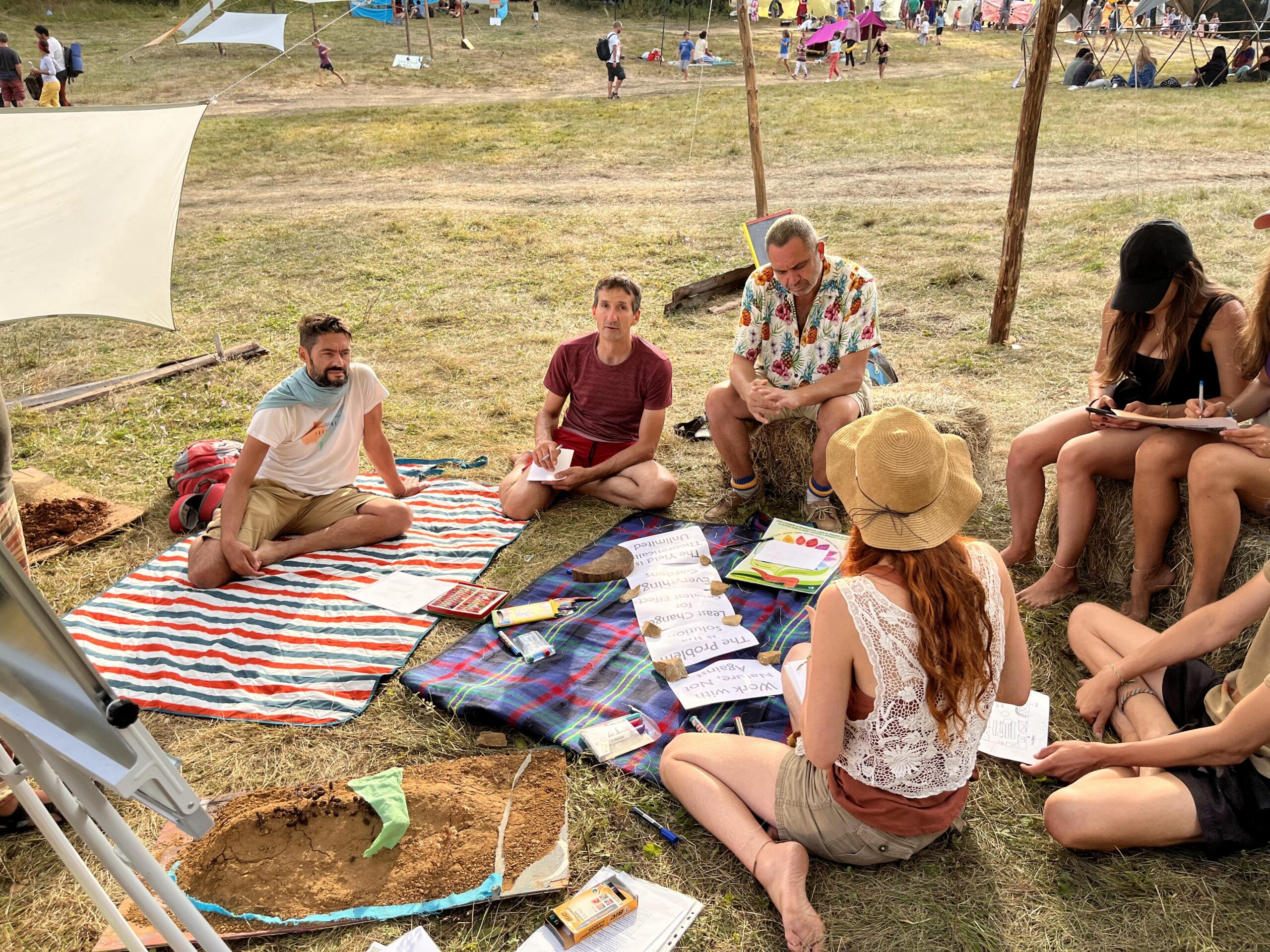
The second session with the participants drawing a base map of their own lands (photo: GSV)
As a final exercise, I showed them the analysis tool of “planning for real”, where you make a miniature 3D version of your plot of land, with any kind of material. Like using sand that can show the relief, blue threads to imitate water streams, any other material to show the existing structures and other elements that are already included or you might want to integrate. It is a fun and insightful method to play with these different elements, placing them here or there, and seeing very directly what connections you would stimulate to establish, depending on where you place what. Or where water would flow if you would do some landscape changes by making swales for instance.
A quick example to the participants of how to do “Planning for Real”
All in all, I really enjoyed facilitating these two sessions, where you can actually touch upon quite a lot already with regards to permaculture. Of course it is far from the same depth you go into with a PDC, but I was happy to see content faces after the end of the two sessions 🙂
Paula:
Hello everybody!
I am going to share with you how lovely it was my first week in Bulgaria. I travelled from Sofia to Varna, and then to Ezerets, a small village close to the Black Sea. There, the Public Centre for Environment and Sustainable Development organised an Eco-camp with Ilian Iliev as host. It was an amazing opportunity to build with natural materials as we could plaster the wall of the compost toilet with clay, sand, and straw. We also made a fish-shaped basket from rebar, net, and caps as a plastic recycling bin for a marathon.
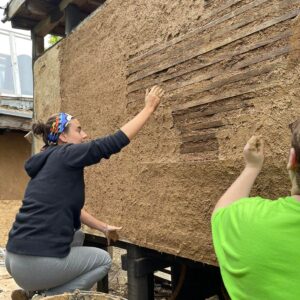
Me plastering and painting the fish-shaped basket.
What’s more, I had the pleasure to meet Hélène Sabatini who is part of Ezerets community centre and has a beautiful garden with lots of beehives. I really hope you enjoy the interview!

